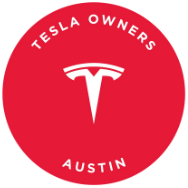The United States is on the brink of a major transformation in the electric vehicle (EV) industry with the opening of ten new battery plants this year. These plants will not only boost the EV market in the country but also reduce dependence on China for battery supply chains. Leading the charge are battery giants like LG Energy Solution, SK On, and Panasonic, who are spearheading this effort to revolutionize the infrastructure needed for the growth of the EV industry.
However, the future of these plants and their impact on automakers’ EV sales hinges on the policies of the current administration, particularly President Trump, who has been vocal about his skepticism towards clean energy programs. With the threat of EV tax credits being revoked and tariffs being imposed on vehicle parts from neighboring countries, the road ahead for these battery plants is uncertain.
Despite the political challenges, the U.S. has emerged as the fastest-growing region for planned battery cell capacity, with the capacity set to increase to 421.5 gigawatt-hours annually with the addition of these new plants. This growth is a testament to the commitment of automakers, battery giants, and state governments, most of which are Republican-led, to push forward with the clean energy transition.
Automakers like General Motors, Ford, Hyundai, Kia, and Honda have already seen record EV sales in the U.S., thanks to incentives and attractive financing deals. The localization of battery production in the U.S. is expected to further drive down costs and make EVs more accessible to consumers. However, the future of the EV market will largely depend on how government policies evolve and support the growth of the industry.
With major players like Toyota, Ford, SK On, and LG Energy Solution investing billions in building new battery facilities across the country, the momentum for America’s EV revolution seems unstoppable. As more plants come online, the landscape of the EV market is poised for exponential growth, ushering in a new era of sustainable transportation.
In conclusion, the U.S. is at a critical juncture in its transition towards a cleaner, greener future with the emergence of these new battery plants. The collaboration between automakers, battery giants, and state governments is paving the way for a robust EV infrastructure that will drive the industry forward and reduce reliance on foreign supply chains. The stage is set for a significant shift in the automotive industry, and the success of these plants will shape the future of EVs in the country.

